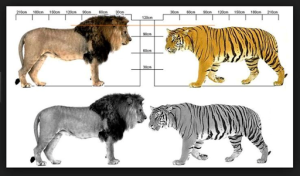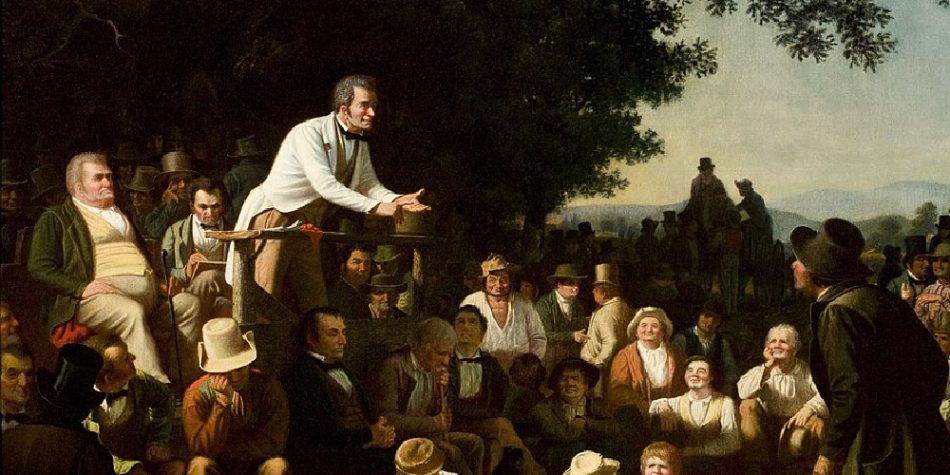When was the last time you were reading the comments on a major story until you came across That Guy? You know, the unhinged one who unleashes a blistering tirade that includes all sorts of playground insults and things we were told in Kindergarten not to say … so much so that you think, “look how crazy this person is!”
Well, have you ever considered that they weren’t crazy? And that they may even be smarter than you think?
Hear me out. Imagine you were really mad at some group about some issue (not so hard for Americans to imagine). Let’s say, for instance, you’re a liberal furious at strong Trump supporters. So, you see an article written about a national political issue, with a lively discussion going on in the comments. And now comes the multiple choice pop quiz: What would be the most effective way to rally people against the MAGA supporters you so vehemently oppose?
A — Write an earnest comment outlining your concerns with that group’s perspective — and express another view you think is better?
B — Just write this instead: “Those godless Biden followers are all going to hell. I, with my buddies, are stocking up weapons for the fight to come. True lovers of Americans will rally to our standard. It’s time for revolution — and so you better watch your back, you gay activists, evil BLM people — because we’re out to take back our country for the White Race.”
Which “rhetorical strategy” would be the most effective in rallying people to oppose Those People? The answer is pretty obvious, don’t you think?
Here’s the question that is far less obvious: How would anyone even know that you were the real author of that comment?
They mostly wouldn’t. Especially in our hyper-reactive American atmosphere right now, would it surprise anyone if the large majority of left-leaning readers took for granted that this hateful, bigoted (fabricated) comment came from a genuinely hateful, bigoted (conservative) heart? Why would they think otherwise?
Especially because it’s so confirmatory of what they already believe. Don’t we all love to come across ‘red meat’ evidence of our deepest, most important convictions?
That’s my own explanation for why the national media seems to love any story that implicates BYU as a bastion of racism … even if the evidence ends up being flimsy and limited.
All right, so fair enough, we all recognize this tendency in our ready-to-pounce, explosively-angry country. So then, what about someone truly, honestly wanting to know the truth … and starting to realize something fishy is going on?
Watching for clues and patterns. In 1888, five women were tragically killed on the east side of London by someone who came to be known in newspapers as “Jack the Ripper” because of the particularly cruel ways in which these women were murdered.

Police couldn’t find him. And no one could figure out what was going on. It created a mass hysteria — with fear spreading more and more amidst the uncertainty. This desperation caused detectives to begin zeroing in on the details of how these murders were happening.

In particular, the brutal way these poor women’s throats were cut, with abdominal mutilations and the removal of internal organs following, led to a narrowed focus on butchers, slaughterers, surgeons, and physicians in the vicinity. Furthermore, the concentration of the killings around weekends and public holidays, as well as within a short distance of each other, lead some to conclude the killer was locally employed.
Although the villain’s identity was never fully proven, this became one of the earliest known examples of criminal profiling, wherein this careful attention to detail helped guide the investigation.
Exactly one year before these murders started, Arthur Conan Doyle introduced Sherlock Holmes to the world. This now world-famous detective was quoted as saying in one of his cases, “It has long been an axiom of mine that the little things are infinitely the most important. Never trust to general impressions, my boy, but concentrate yourself upon details” (A Case of Identity, 1891).
That, I would submit, is a central key in how you — and any of us — can begin to identify truth-tellers from propaganda artists — including and especially those masquerading online as an especially loathsome version of the group they hate the most.
Spotting propaganda. In 1965, French sociologist Jacques Ellul outlined how to recognize propaganda in the classic text, “Propaganda: The Formation of Men’s Attitudes.” These five qualities of all propaganda are especially helpful in identifying what is known as “gray” propaganda, where you don’t easily recognize the true source:
1. Dominating with pervasive and non-stop messaging
2. Delegitimizing and demonizing any opposition
3. Framing the conversation favorable to (only) one view
4. Finessing the truth in various other ways
5. Bypassing rational discourse by invoking darker passions (e.g., fear or anger).
When you hear “dominating with pervasive & non-stop messaging,” what does that bring to mind around us today? Compared with other truth-tellers, who may share their message with equal passion, a propagandist relies on overwhelming people. On that point, Ellul says:
Propaganda must be total. The propagandist must utilize all of the technical means at his disposal … successful propaganda will occupy every moment of the individual’s life: through posters and loudspeakers when he is out walking, through radio and newspapersat home, through meetings and movies in the evening. The individual must not be allowed to recover, to collect himself, to remain untouched by propaganda during any relatively long period. … It is based on slow, constant impregnation (emphasis my own).
Slow, constant impregnation. Occupy every moment. Not allowed to recover. Sound familiar?
Bypassing rational discourse through fear or anger. None of this is aimed at simply teaching or enlightening people. As Jacques Ellul elaborates:
The aim of modern propaganda is no longer to modify ideas, but to provoke action. It is no longer to change adherence to a doctrine, but to make the individual cling irrationally to a process of action. It is no longer to lead to a choice, but to loosen the reflexes. It is no longer to transform an opinion, but to arouse an active and mythical belief.
Goading people into certain kinds of actions (and inaction) rather than helping them think more clearly, is what a propagandist wants. In fact, you can summarize all five of those characteristics in one way. You will know when you’ve spotted a propagandist masquerading as a truth-teller because the fruit of their sharing will be to silence others and to distort, divert, and deform healthy dialogue in some way.
Profile of a Propagandist. Let’s break that down more clearly, into a simple profile you can use to discern any online commentary that comes from a legit propaganda artist. Pay attention to when someone is …
1. Saying SO much that it drowns out other voices
2. Saying things to make others seem illegitimate
3. Saying things to make himself or herself unquestionable
4. Saying things that are demonstrably untrue
5. Saying things to “stir people up” in anger or fear
In sum, be on the lookout for what we might call pervasive rhetorical aggression — reflecting a concerted campaign to fight honest conversation. As Jacques Ellul underscores, “To be effective, propaganda cannot be concerned with detail. … Propaganda ceases where simple dialogue begins … it does not tolerate discussion; by its very nature, it excludes contradiction and discussion.”
Is that clear enough? To really tighten the picture further, let’s talk about a fair control group — which is key in scientific research to establish the truth further. Many others are also passionate and sharing things — including passionate activists and missionaries for different faiths.
Profile of a truth-teller. In contrast to the profile of a propagandist above, here are some characteristics to identify someone telling the truth passionately and honestly:
1. Saying lots of stuff, but not in an attempt to drown out those who disagree
2. Saying things to promote a message while holding space for questions
3. Not saying things to intentionally delegitimize others
4. Not saying things that are demonstrably untrue
5. Not saying things to merely “rile people up”
In summary, truth-telling always helps to cultivate a healthy dialogue space, in sharp contrast with those generating propaganda, who have no such interest.
Telling the difference: Wildebeest or a Lion? And the cool thing is you can tell the difference between these two. Just like on an African safari, you look out and say, “those are the wildebeests,” and “those are the elephants,” and “those are the lions.” They all eat things and walk on four legs. But they are different beasts. Discernible. Detectable. And differentiable.
Even if they look mostly the same! If you see this furry predator with stripes, it’s probably a tiger. But if you spot a predator with a mane and no stripes, it’s probably a lion.

Paying attention to details, these things become predictable. When you spot something fishy online, try honing in on these same five questions — assessing whether this person is …
1. Trying to drown others out in passionate sharing?
2. Trying to delegitimize those with different views?
3. Trying to close down the space for those raising sincere questions?
4. Trying to stay as accurate and factual as possible?
5. Trying to promote rational, thoughtful exchange?
When you get to this level of granularity, it starts to get pretty black or white. That is, you are either …
1. Drowning others out or making space for them
2.Delegitimizing others … or engaging them
3. Cutting off people with sincere questions … or hearing them out
4. Staying as accurate as possible … or not
5. Promoting thoughtful exchange … or not
You can be one of these or the other — but you can’t really be both! And by running text through this test, you can tell the difference. As Douglas Adams parodies in his book Dirk Gently’s Holistic Detective Agency, “If it looks like a duck, and quacks like a duck, we have at least to consider the possibility that we have a small aquatic bird of the family Anatidae on our hands.”
Which brings us back to the example we began with, where someone is pretending to be someone else online — as a way to make them look repulsive and terrible. How much are we being played by propagandists?
Those who study cyberbullying recognize the similarity to a common bullying technique called “frapping,” where the bully impersonates someone else by logging into their social media account, using a screen name similar to the victim’s, and creating a new account pretending to be the victim. The bully then engages in inappropriate behavior to make the other person look bad. One study found that among teens who admitted to cyberbullying, 5% had created a fake profile online and used it to annoy or upset another person.
Being vigilant and courageous. We’re experiencing a bit of a ‘Knives Out’ moment at our magazine, directed at me in particular. Some are good faith critiques, while others are clearly not — reflecting something else. In addition, there are a growing amount of salacious, outrageous lies being promoted online about us.
We expect all of this to continue as we wade into some very sensitive and important conversations in the weeks ahead. We’re not doing any of this to be popular — and know well that if we wanted to be liked online, we’d be pursuing a very different strategy. When it comes to followers, our ultimate concern is only with One — the same who once warned his followers, “If the world hates you, remember that it hated me first.”
Our hope is that others looking on will be discerning when they see accusations being made of us as a team. These criteria above may not provide definitive proof that someone is being fake and disingenuous. If someone’s really good at it, they’ll probably be able to fool most people. The ultimate test of lies is a more internal, “embodied” test. As Joseph Smith once put it, “truth tastes good.” Just as we know how rotten food tastes when it first goes into your mouth, we can detect when something rotten comes to our attention. And we can tell when something beautiful does too. “Oh wow, that feels so right … yum!”
Don’t underestimate what this internal confirmation of truth can tell us. As Moroni testifies anciently, “by the power of the Holy Ghost ye may know the truth of all things.”
Do you know what this feels like inside? It’s sweet and peaceful — unmistakably so. Different than mere head harmony, this is the kind of gut-deep peace that is impossible to shake. When you feel that, you can then follow the Buddha’s dictum, to simply “follow the peace.” Along the way, let’s keep our eyes out for these details. Speaking through Sherlock Holmes, Arthur Conan Doyle writes, “On the contrary, Watson, you can see everything. You fail, however, to reason from what you see. You are too timid in drawing your inferences” (“The Adventure of the Blue Carbuncle,” 1892).
With the help of the Spirit and our own watchful attention to these kinds of details, may we do our best to see everything we need to see — and spot those attempting to make us see things that are false.


















